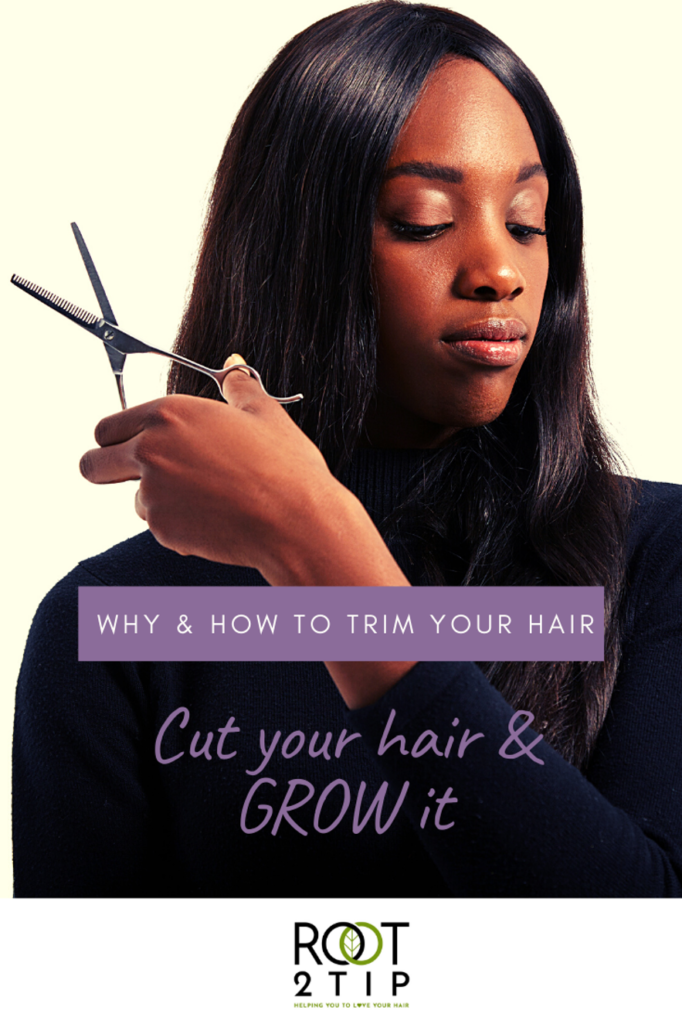Trimming your hair is almost like working out; we all know we should probably do it more than we actually do. In order to maintain and preserve a healthy head of hair, trimming should be an essential part of your routine. I know, it sounds a little weird to cut your hair when your goal is to grow it long and luscious, but trust me, there are some good reasons for doing this. Here are some tips on how to trim black hair and why cutting your hair will help you retain as much length as possible.

1. Stringy ends are your enemy
Hair should always be even all around, unless you are wearing a particular hairstyle that calls for different lengths like bangs, for example.
However, if the majority of your hair is one length and you have a couple of long strands that are thinning towards the ends, they are probably causing more damage than good.
The older hair gets, the thinner it becomes through manipulation and split ends. So, holding on to those stringy ends will ultimately cause more breakage and prevent your hair from growing in length.
2. Cutting your hair actually helps retain more length
I get it, your goal was to grow your hair as long as possible. So cutting it just sounds counterproductive, but trust me, cutting off up to an inch every couple of months can help you reach your goals faster.
If you have ever had the impression that your hair is stagnant and hasn’t grown for a couple of months, it’s because split ends are greedy. They do not just stay in one place, but once the hair is split, it continues to split upwards causing more damage and breakage to your hair.
So, while your hair is actually growing, it is breaking off at the same rate, causing you to see little to no progress. Once you get rid of the damaged part of your hair, your trimmed ends are strong enough to be preserved. Your new growth becomes visible.
So now that we have established the importance of trimming, we want to give you some tips to getting it right and making it easy at the same time.
3. Before the trim for black hair
Make sure you have sharp scissors that you only use for your hair. Using dull scissors will cause breakage, leading you back to square one.
Try to trim your hair in a stretched state.
It does not need to be a complete blowout, but trimming on tight curls will give you a false sense of precision and may not help you identify the damaged areas.
4. During the trim for black hair
Run your fingers through a section of your hair, from your roots to the ends, and feel for rough areas. This is a great indicator for damaged strands.
Cut right above when it starts feeling damaged, so you do not leave any split ends that could continue to cause breakage.
If you have trouble identifying the damaged area, take a medium section and twist it. The twist should be even in thickness, from root to tip (see what I did there, haha).
If it starts getting thinner towards the end, that is an indication of thinning and damaged hair. Cut right above where it starts to thin out.
5. After the trim for black hair
After a fresh trim, you want to take special care of those ends. Keep them as protected and tucked away as possible. Wear protective styles to keep your ends from being overly manipulated and rubbing against your neck and clothes.
Be gentle when styling and combing your hair. Whilst manipulating your hair is inevitable, you want to be as gentle as possible. This avoids premature breaking.
A regular trim every 4 – 6 months or once a year at a minimum can hugely impact your hair journey.

